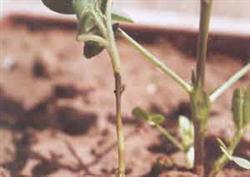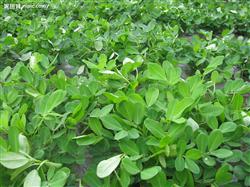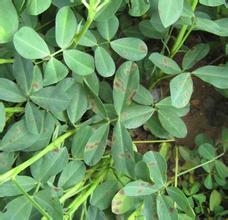Control of Peanut sheath Blight

Peanut sheath blight generally began to occur in the first and middle of June. Comprehensive control measures are as follows: ditches should be opened for lower fields in order to remove stagnant water and lower water level, and peanuts on sloping land should also be ditched so that there is no stagnant water after rain. Increase the application of calcium and potassium fertilizer. After the initial flowering stage, combined with accumulated soil to cultivate the border, the application of lime 40 kg / mu or the mixture of lime and plant ash of 15 kg / mu or 25 kg / mu could enhance the disease resistance of the plant. Early detection and early treatment. Timely inspection in the flowering period, when the disease rate is about 20%, should immediately spray prevention and control. Can use Jinggangmycin 800 times liquid, or 75% chlorothalonil 500 times 600 times liquid spray. Spray should be uniform, upper and lower leaves, both sides of the blade should be sprayed. In case of heavy rain after spraying, spray again. Each time the spray liquid is about 75 kg per mu, and it is sprayed again 8-10 days after the first spray. Do not spray in the hot sun at noon.
- Prev

Four points should be grasped in the late stage of high yield of peanuts.
Peanut from 50% of the plants appeared full to most pods mature and harvested as its late growth stage. The growth characteristics of this period are as follows: the vegetative growth gradually declined and stopped, the pods became full gradually, and the increased fruit weight generally accounted for 500%-70% of the total fruit weight, which was the main period for the formation of pod yield. The technical measures of field management in this issue.
- Next

Prevention and Control of Peanut net spot
Peanut net spot, also known as brown spot and moire spot, often occurs mixed with leaf spot, which can cause early peanut leaf shedding and seriously affect peanut yield. The main results are as follows: first, the regular diseases begin to occur at the flowering stage, and the peak period is from podding to maturity, which mainly harms the leaves and produces round or irregular shapes along the main vein.
Related
- The first cup of black tea in spring, the flavor and history of tea gardens in Kenya, Africa
- The computer can not only choose potatoes, but also grow tea rice. AI will grow winter oolong tea champion.
- It is not only the inflated tea bitten by insects, but also engraved with the four seasons tea in Beipu.
- The Oriental Beauty Tea Festival in Zhuxian County takes the stage at the weekend to experience the plus-size feast of oil tea.
- & quot; Oriental Beauty Tea & Exploration of Emei in Hsinchu, the hometown of quot;
- The new variety of strawberry "Tainong 1" dessert is the first choice with mellow aroma. Crimson gorgeous
- History of Tea in Taiwan: from Wild Inner Mountain to Export Tea Garden
- Two types of Taiwan Oriental Beauty Black Tea won the British three-Star Award for Childhood Tea Xiang Zhang Jiaqi changed from pilot to champion tea maker.
- Banana species and varieties: the planting history of Taiwan Xianren banana and dwarf banana is long, is banana disease resistant?
- Coffee planting Technology: Qianjie Coffee from Seedling to harvesting

